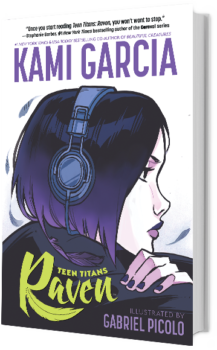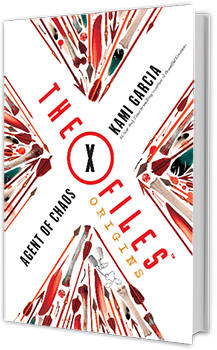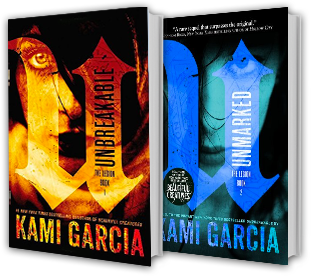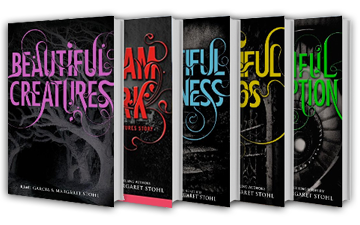Every Monday, I’m going to post about what’s on my desk.
Today, I was plotting ACT I & the first part of ACT II of Unbreakable, so my desk was the floor. Even though I’ve already started writing (and outlined the major beats in the novel), I needed to see the first third of the book as a whole. That’s the only way I can figure out what’s missing. My editor will write me a long letter and let me know what she thinks is missing in a few weeks — but that’s another post and requires ice cream.
I’m an outliner, and one of the techniques that works for me is using notecards to plot the major beats (or events) in the book. Each event gets its own notecard.
* According to Larry Brooks, the author of STORY ENGINEERING, the magic number of notecards for a novel is 40.
The late Blake Snyder wrote an amazing book called SAVE THE CAT. In STC, Snyder spends a lot of time discussing the importance of setting up “the Board.” Essentially, the Board is a white board or bulletin board on which you can tape or pin your notecard. This enables you to move them around and see your plot visually. If you use Scrivener, you can also use the Corkboard feature and achieve the same result. Although moving the cards around on a board or the floor is more fun.
James Scott Bell is a fan of physical notecards, too. In his book, PLOT & STRUCTURE, he explains how to create and use cards to develop your plot. If you’ve read the previous “On My Desk” posts (#1, #2), then you’ve seen my dog-eared, tabbed & stained copy of PLOT & STRUCTURE. My dog, Oz, actually took a bite out of the cover.
I’m headed back to the floor and my cards. Happy writing.
Want to Create Your Own Board?
Pick & choose your favorite items from the list below.
– Notecards (I like colored ones.)
– Cool Box for Notecards
– Board (optional)
– Pens
– Colored Markers
– SAVE THE CAT by Blake Snyder
– PLOT & STRUCTURE by James Scott Bell
– STORY ENGINEERING by Larry Brooks
What’s your favorite way to plan your novel?
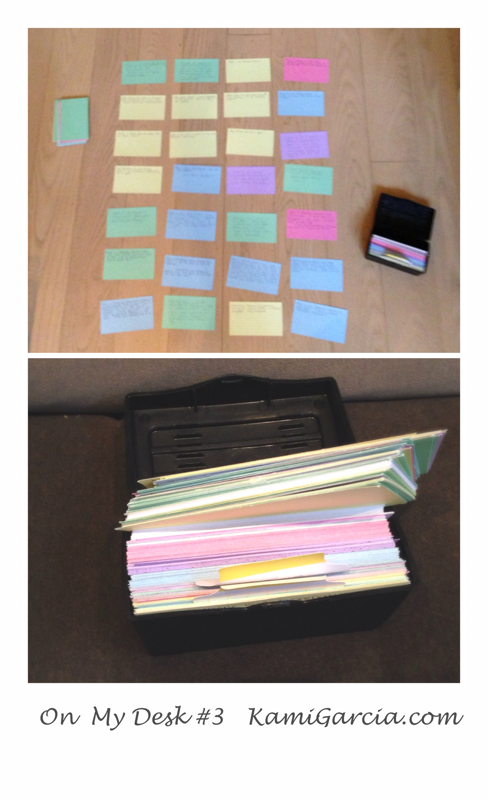

 a #1 New York Times, USA Today, and international bestselling author and comic book writer. As an award-winning, Bram Stoker Award-nominated young adult author of 12 novels and graphic novels, she has been published in 51 countries and 38 languages and her books have sold more than 10 million copies worldwide. Kami’s best known works include the Beautiful Creatures series, Teen Titans: Raven, The X-Files: Agent of Chaos, The Lovely Reckless, Broken Beautiful Hearts, and the DC Black Label comic Joker/Harley: Criminal Sanity. She is also a cofounder of the Kid Lit book festival YALLFest.
a #1 New York Times, USA Today, and international bestselling author and comic book writer. As an award-winning, Bram Stoker Award-nominated young adult author of 12 novels and graphic novels, she has been published in 51 countries and 38 languages and her books have sold more than 10 million copies worldwide. Kami’s best known works include the Beautiful Creatures series, Teen Titans: Raven, The X-Files: Agent of Chaos, The Lovely Reckless, Broken Beautiful Hearts, and the DC Black Label comic Joker/Harley: Criminal Sanity. She is also a cofounder of the Kid Lit book festival YALLFest.
